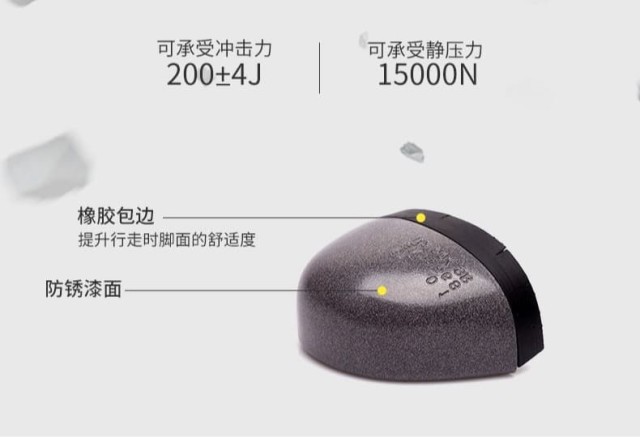Selecting the right steel toe boots isn't just about compliance—it’s about matching protective features to your workplace hazards while ensuring all-day comfort. This guide breaks down safety certifications, material trade-offs, and ergonomic design principles to help you make informed decisions.
Choosing the Right Steel Toe Boots for Your Job
Decoding Safety Certifications: What ASTM F2413 Ratings Really Mean
Safety starts with understanding standards. Boots labeled ASTM F2413 meet baseline requirements for impact and compression resistance:
- Impact resistance (I): Protects against falling objects (e.g., tools, machinery).
- Compression resistance (C): Withstands forces up to 2,500 lbf on the toe area.
Key question: Does your job involve heavy rolling objects (e.g., pallet jacks)? Prioritize boots with both I/C ratings.
Material Durability: Steel vs. Composite Toes and Sole Longevity
- Steel toes: Offer maximum crush protection but add weight and conduct temperature.
- Composite toes: Lighter and non-metallic (ideal for electrical work) but may lack equivalent durability.
- Outsoles: Vibram or proprietary rubber compounds excel in slip resistance, while polyurethane (PU) suits urban environments with abrasion resistance.
Waterproofing Technologies: Membranes vs. Treatments for Wet Environments
- GORE-TEX® membranes: Breathable and waterproof but raise costs.
- Chemical treatments: Affordable but lose effectiveness over time.
Pro tip: For wet climates, prioritize sealed seams and moisture-wicking liners to prevent blisters.
Ergonomic Design for Heavy-Duty Work
Arch Support and Shock Absorption: Metrics for All-Day Comfort
Look for:
- Dual-density midsoles: Cushion heels and arches during prolonged standing.
- Metatarsal guards: Redirect pressure away from the foot’s midsection.
Did you know? Poor arch support contributes to fatigue-related accidents in 60% of warehouse workers.
Breathability vs. Insulation: Matching Climate Demands
- Mesh panels: Enhance airflow for indoor/warehouse settings.
- Thinsulate® linings: Retain heat in freezing conditions without bulk.
Balance: In high-heat environments, moisture-wicking liners prevent sweat buildup.
Case Studies: Boots Tailored to High-Risk Professions
Electrical Hazard Protection for Utility Workers
EH-rated boots avoid conductive materials (e.g., metal shanks) and use dielectric outsoles to block voltage.
Critical feature: Non-metallic toe caps and puncture-resistant soles for climbing poles safely.
Slip-Resistant Outsoles for Construction Sites
- Deep treads: Channel mud and water away on uneven terrain.
- Oil-resistant rubber: Essential for roofing or auto repair to prevent falls.
Real-world impact: Slip-resistant boots reduce 30% of fall injuries on construction sites.
Final Considerations: Prioritizing Long-Term Value
- Rotate pairs: Extend boot lifespan by alternating wear.
- Check fit: Allow 0.5-inch toe space to prevent nail damage from shifting feet.
"A $200 boot worn 250 days/year costs under $1/day—cheaper than injury-related downtime."
Upgrade Your Safety Gear
3515 manufactures job-specific steel toe boots for distributors and bulk buyers, combining ASTM-certified protection with ergonomic engineering. [Contact us] to customize footwear for your workforce's unique risks.
Products You Might Be Looking For:
View ASTM-certified steel toe work boots
Explore durable steel toe safety footwear
Check out customizable steel toe work shoes
Browse heavy-duty steel toe work boots
Related Products
- Wholesale Customizable Suede Safety Boots - Puncture-Proof with Velcro Closure
- Puncture-Resistant Velcro Safety Boots for Wholesale & Custom Manufacturing
- Customizable Anti-Smash Safety Boots for Wholesale & Private Label Manufacturing
- Wholesale Leather Safety Boots with Customizable Protective Toe
- Durable Leather Safety Boots for Wholesale & Custom OEM Manufacturing
Related Articles
- How to Choose Work Boots That Match Your Industry's Safety Needs
- How Safety Work Boots Engineer Protection: Features and Standards for Targeted Hazard Mitigation
- Steel Toe Work Boots: Balancing Safety and Comfort for Demanding Jobs
- How to Choose Work Boots That Match Your Job Demands and Safety Needs
- Matching Men’s Work Shoe Safety Technologies to Workplace Hazards




















